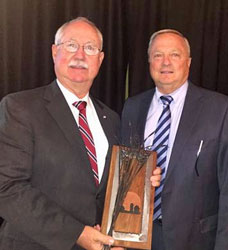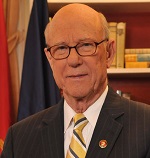While we were busy with koalas and kangaroos last week in Australia, the first AgCatalyst Awards were being handed out in Kansas City.
One of the inaugural honorees was our very dear friend Al Johnson, who started his career more than four decades ago with a traditional print magazine, Dakota Farmer, and continues to innovate and lead the ag media industry. He helped steer Farm Progress as the media company grew from seven to 39 publications and navigated the digital evolution. Today he has totally embraced digital media and helped create Agri-Pulse Communications, the leading source of ag policy news, with his wife, Sara.Also recognized was Fresh Air Media, started by Ontario dairy and crop farmer Andrew Campbell. The former news writer continues to educate through social media, speaking engagements and in-depth training sessions on technology and agriculture. Fresh Air Media was responsible for establishing #farm365 this past year, offering Twitter followers a daily photo and behind-the-scenes look at farming life.
AgCatalyst is a marketing and communications conference, hosted by AdFarm which focuses on the agriculture and food industries.










